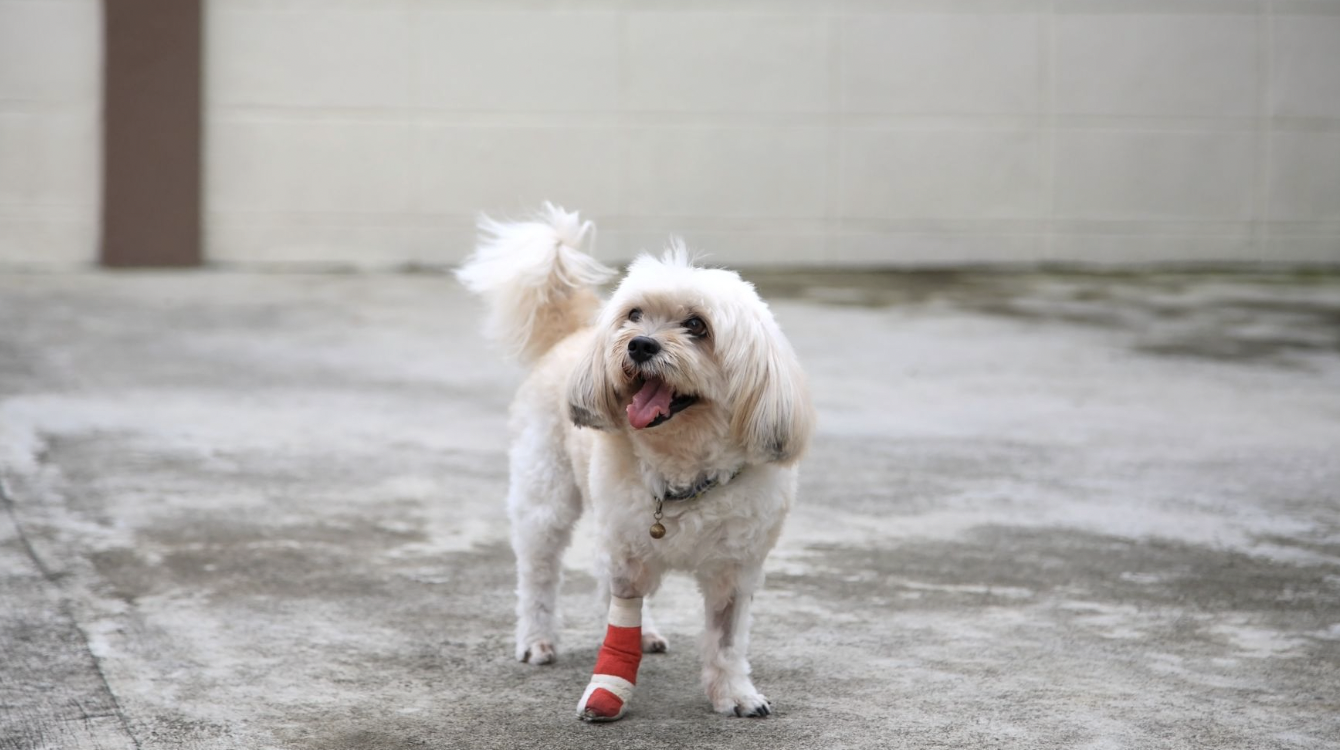A Guide To Common Dog Leg Injuries And Next Steps

A dog's mobility and zest for life are linked to its physical health. Leg injuries, unfortunately common in canines of all breeds and sizes, can significantly impact a pet's quality of life. These injuries can range from minor, self-resolving sprains to severe, debilitating fractures or ligament tears. Recognizing the signs of a leg injury, understanding the potential causes, and knowing the appropriate next steps are crucial responsibilities for every dog owner. Prompt and proper action can dramatically influence the speed and success of a dog’s recovery, preventing a temporary setback from becoming a chronic condition.
Here’s a guide to common dog leg injuries and next steps.
Recognizing the Signs of a Leg Injury
Dogs are typically stoic creatures, masking signs of pain as an instinct. Therefore, owners must be vigilant observers of subtle behavioral and physical changes. The most obvious indicator is lameness, or limping, which can range from a slight hesitation to bear weight on a limb to a complete refusal to use the leg. Some other common signs include:
- Visible Swelling or Bruising: Swelling (puffiness), warmth, and discoloration like bruising are classic signs of inflammation. This is the body's response to tissue damage, where increased blood flow causes warmth and swelling, while broken blood vessels leak blood into the surrounding tissues, leading to visible bruising or redness.
- Vocalization: Vocalizations like whining, yelping, or growling are clear indicators of acute pain, particularly when provoked by touch or movement. These sounds are an involuntary reaction, signaling that manipulating the injured area exacerbates discomfort. This can help pinpoint the exact location and severity of the injury.
- Abnormal Gait: An abnormal gait like "bunny-hopping," where both back legs move together, is a significant red flag. This motion typically indicates pain or instability in the hips or knees, as the dog attempts to redistribute weight away from the injured limb to minimize discomfort while moving.
- Licking or Chewing: Persistent licking at a specific joint is a canine coping mechanism for pain and inflammation. While it can soothe minor irritation, it typically indicates underlying discomfort from an injury like a sprain or arthritis. This behavior can also lead to secondary issues like hair loss or infection.
- Reluctance to Move: A sudden unwillingness to participate in normally enjoyable activities like walks or play is a pronounced sign of pain or weakness. This reluctance can indicate that the leg injury is significant enough for the dog to self-limit movement to avoid further discomfort or exacerbation of the condition.
- Loss of Muscle Mass: Muscle atrophy, or a visibly smaller muscle mass on one leg, is a sign of a chronic injury. When a dog avoids using the limb due to prolonged pain or instability, the muscle tissue deteriorates from disuse. This can highlight the need for veterinary intervention and rehabilitation.
Understanding these common signs allows dog parents to obtain proper diagnosis and treatment plan for their pets’ leg injuries. However, for comprehensive information on diagnosis and surgical options, owners can also consult resources like Sunnyside Vet or other options in their area.
Common Types of Dog Leg Injuries
Canine leg injuries encompass a wide spectrum, from minor soft tissue damage to severe skeletal trauma. Understanding the common types can help owners recognize potential problems early. These injuries typically fall into several key categories with distinct causes and characteristics. Familiarity with these conditions is the first step toward ensuring a dog receives the prompt, appropriate care necessary for a full recovery.
Below are some common types of dog leg injuries:
Sprains and Strains
These are among the most frequent injuries, involving damage to the soft tissues. A sprain affects the ligaments, which connect bones to other bones at a joint, while a strain involves the muscles or tendons, which connect muscles to bones. These typically occur from sudden twists, overexertion, or awkward landings. Some symptoms include mild to moderate lameness, swelling, and pain. Treatment typically involves rest, controlled exercise, and anti-inflammatory medication as a veterinarian prescribes.
Fractures
A fracture is a break in a bone. These can be simple (a clean break) or compound (the bone pierces the skin), and are usually the result of significant trauma, such as being hit by a car, a bad fall, or a forceful impact. Fractures are medical emergencies characterized by severe pain, an obvious deformity or angulation of the limb, and an inability to bear any weight. Immediate veterinary attention is critical. Treatment involves stabilization with a splint or cast, but many fractures require surgical repair with pins, plates, or screws to ensure proper healing.
Cruciate Ligament Tears
This is a prevalent and serious injury, especially in larger breeds. The cranial cruciate ligament (CCL) is analogous to the ACL in humans and stabilizes the knee joint. A tear can be a sudden, complete rupture or a gradual degeneration. It often happens when a dog suddenly changes direction while running. A sudden tear will cause a dog to cry out and immediately hold the leg up. A partial tear may cause intermittent lameness that worsens with exercise. This is a complex injury that almost always requires veterinary intervention.
Luxating Patella
This condition involves the dislocation of the kneecap (patella) from its normal position in the femur groove. It’s a common issue in small and toy breeds. The patella may pop in and out of place, causing the dog to skip or hold the leg up for a few steps before returning to normal gait. While mild cases can be managed with weight control and physical therapy, severe or frequent luxations typically require surgical correction to prevent arthritis and chronic pain.
Joint Dislocations
Dislocation, or luxation, occurs when the bones that form a joint are forced out of their normal alignment. The hip and shoulder are common sites for dislocations, usually resulting from trauma. The leg may appear visibly distorted or held in an abnormal position. This is a painful condition that requires immediate veterinary care to "reduce" or put the joint back in place, often under anesthesia.
Paw Pad Injuries
The pads of a dog's feet are tough but not indestructible. They can be cut by glass or sharp rocks, burned by hot pavement, or irritated by ice-melting chemicals. Signs include limping, licking the paw, and visible cuts or abrasions. Bleeding may be present with lacerations.
Immediate First Aid and Next Steps
When a leg injury is suspected, an owner's priority is to prevent further harm and safely transport the dog to a veterinarian. Below are some immediate first aid tips and steps to consider:
Remain Calm and Restrain the Dog
Pain can trigger a reflexive, defensive bite from even the gentlest dog. To ensure everyone's safety, it’s best to approach the animal calmly. Using a soft muzzle or a makeshift one from a leash or gauze can prevent injury while providing necessary aid and restricting movement.
Perform a Basic Assessment
A careful visual assessment can reveal critical information. Pet owners should look for bleeding, unusual angles, or swelling along the limb. It’s also imperative to avoid manipulating the leg, as moving a suspected fracture can cause severe additional damage to nerves, blood vessels, and surrounding tissues, worsening the injury.
Control Bleeding
The primary first aid step to control bleeding is applying direct, gentle pressure to a cut with a clean cloth. This action can encourage natural clotting. Maintaining pressure for several minutes before checking if the flow has stopped is essential to stabilize the injury for transport.
Minimize Movement
For suspected fractures or severe injuries, pet owners should try to immobilize the dog as much as possible. Using a towel as a sling or carefully placing the dog on a rigid surface, like a board, for transport is also crucial.
Seek Immediate Veterinary Care
Do not wait to see if the injury improves. A professional diagnosis is essential. The veterinarian will perform a physical examination, including palpating the leg and observing the dog’s gait. Diagnostic tools such as X-rays are typically necessary to confirm fractures, ligament tears, or joint abnormalities.
Diagnosis and Treatment Options
The treatment plan will depend entirely on the specific diagnosis. For minor sprains, the RICE protocol (Rest, Ice, Compression, Elevation) and a course of anti-inflammatory medication may be recommended. More serious conditions like CCL tears or fractures typically require surgery. Modern veterinary medicine offers a range of advanced procedures, from minimally invasive arthroscopic surgery to complex fracture repairs. Post-operative care is a critical component of recovery and often includes strict rest, physical rehabilitation, hydrotherapy, and pain management.
Long-Term Management and Prevention
Recovery from a significant leg injury can be a lengthy process. Owners must follow all veterinary instructions meticulously to ensure the best outcome. Long-term management may involve weight management to reduce stress on joints, joint supplement diets containing glucosamine and chondroitin, and ongoing moderate exercise to maintain muscle strength.
While not all accidents can be prevented, owners can mitigate risks by avoiding high-impact activities on hard surfaces, maintaining a healthy weight for their dog, and providing a safe environment free of hazards. Regular veterinary check-ups can also help identify potential orthopedic issues before they become severe.
Conclusion
Navigating a dog's leg injury can be stressful, but a prompt and informed response is fundamental to a successful outcome. Recognizing the signs of injury and seeking immediate veterinary care are the most critical steps an owner can take. Also, by keeping the information presented above in mind, owners can provide their canine companions with the best opportunity for a full return to mobility and a pain-free life. Ultimately, vigilant observation and proactive veterinary partnership are the cornerstones of effective long-term joint health and well-being.






